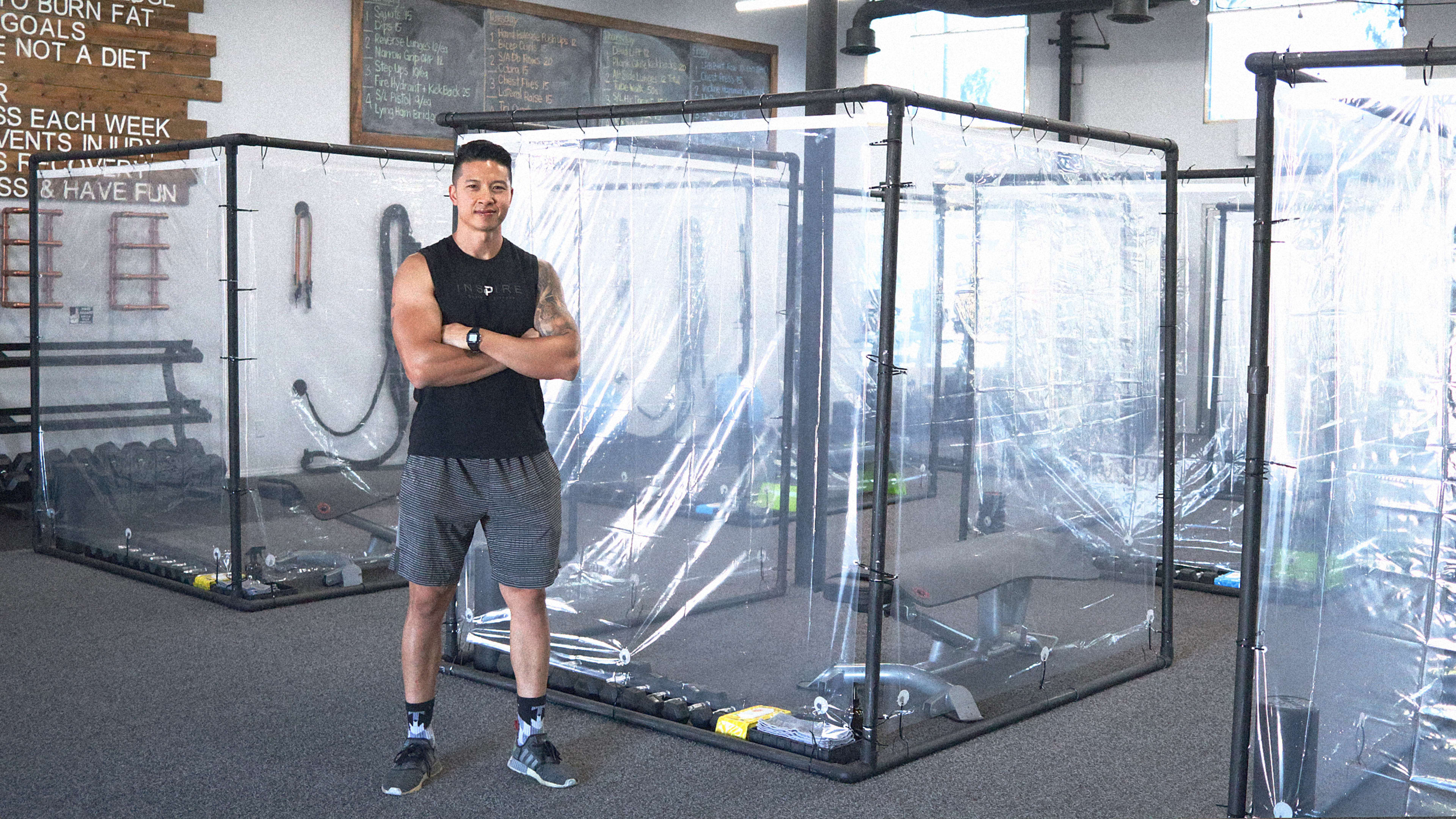In the COVID-19 era, it’s hard to think of a more dangerous enclosed space than somewhere you breathe hard, touch machinery, and drip sweat alongside other people. But as the country is giving the green light to reopen fitness centers, that means we need to rethink a place most of us haven’t been in a long time: gyms.

When COVID-19 hit, Sapsin lost 50% of his clients, and he’s been running classes over Zoom for the remaining clients since. Monday was the first time he’d had members inside the gym since March 16. After asking visitors to sign a waiver, sanitize their hands, and have their temperature taken at the door, he maxed the gym’s new nine-person capacity with a full class (down from 24 before COVID).
The idea of exercising inside these workout pods might seem silly, or even absurd—being inside a shower curtain cage definitely enhances the whole hamster-wheel aesthetic of working out in the first place. It’s also impossible to know how much these cubes make a difference to the actual spread of COVID-19. Are physical barriers enough when researchers believe that a building’s HVAC system is so important, too? And are gyms worth the risk in the COVID-19 era, when MIT research says to steer clear?
Those qualms aside, the design is in line with some best practices we’ve already seen, in that it’s notably similar to a well-researched project called the COVID Shield, developed by a leading healthcare architecture firm, Cannondesign. The COVID Shield places healthcare workers inside three-walled plexiglass cubes. The difference in Sapsin’s design is mainly that the materials are far less expensive, and that the cubes are filled with weights instead of medical equipment. While these workout pods certainly aren’t foolproof when it comes to spreading COVID-19, the design gets a nod for thrift and ingenuity, and for being used in combination with other health-screening efforts. Meanwhile, Sapsin promises to continue offering Zoom classes until a vaccine is released.
Recognize your brand’s excellence by applying to this year’s Brands That Matter Awards before the final deadline, June 7.
Sign up for Brands That Matter notifications here.
